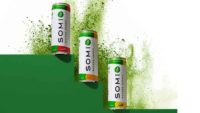Aging Jocks Look for More from Next-generation Energy Drinks
The introduction of Gatorade in the mid-1960s helped launch the new category of energy drinks and, over the years, the market for such products has exploded. Today, there are aisles and aisles of energy drinks, and recently, sports-specific drinks such as Soccerade have been added -- along with power bars and power drinks, recovery beverages, enhanced beverages, endurance beverages, super-ionized water, power drinks, power bars and supplements of every conceivable kind.
As the U.S. population ages, everyone from Michelle Obama to your family physician and the National Institutes of Health (NIH) is recommending regular exercise. The NIH advises, “Regular exercise can prevent or delay diabetes and help reduce arthritis pain, anxiety and depression.”
In the midst of this national focus on health, Baby Boomers are a particularly attractive market. Just now reaching retirement age, Boomers have demonstrated a willingness to spend disposable income on health club memberships, personal trainers, yoga classes and supplements. They look and feel younger than their parents did at the same age, and they are committed to maintaining that edge.
Will today’s array of energy drinks respond by evolving into tomorrow’s nutritionally enhanced beverages? If these aging athletes believe such beverages will help them postpone aging, the answer is likely to be a resounding “Yes!”
Consider the market potential in formulating nutritionally enhanced beverages to address joint support, cognitive function, injury prevention, endurance, recovery, bone density, cardio health, weight management or metabolism support. All are topics of growing concern for everyday athletes, as their battered bodies pay the price of a longer lifetime of exercising.
Recovery More Important as Athletes Age
Studies show that aging athletes can maintain a very high level of fitness well into their later years. However, as we age, recovery becomes even more important. Studies show that consuming protein after workouts helps athletes recover more quickly, by rebuilding muscle. The American College of Sports Medicine recommends .08g of protein per kilogram of body weight per day but says, “additional protein may be needed to aid in the repair of exercise-induced damage to muscle fibers.”
Whey protein has been used for years by body builders, and today, there is a growing market of other products with added protein, including protein-enhanced water, juice and bars. With the evolution of the technology to purify protein, it is feasible to protein enhance many beverages.
Joint Support Helps Maintain Activity Levels
As consumers age, they lose muscle and bone mass. Women, who have less muscle and bone to begin with, are at greater risk of osteoporosis and joint injuries as they age. The value of calcium and vitamin D supplements in maintaining bone mass is well-known, but there is growing awareness, as well, of the value of supplements like glucosamine, condroitin and methylsulfonylmethan (MSM), a naturally occurring nutritional sulfur, in reducing joint pain.
Some sports beverages already on the market contain vitamin D and calcium, along with glucosamine and condroitin, promising to “keep your joints lubricated so you can keep doing what you love.” A number of powdered drink formulas containing methylsulfonylmethan are available, as well.
Condroitin, glucosamine and MSM are all Generally Recognized as Safe (GRAS)-certified and temperature stable, making them feasible additions to sports beverages, juice and single shots.
Omega-3 to Promote Heart Health
Omega-3 fatty acids have been proven to benefit the heart. The American Heart Association, which recommends increasing consumption of omega-3 fatty acids, reports, “Research has shown that omega-3 fatty acids decrease risk of arrhythmias, decrease triglyceride levels, slow the growth of atherosclerotic plaque and lower blood pressure slightly.”
Omega-3 is being used in all kinds of products, and there are GRAS-certified omega-3 ingredients that could be incorporated into any number of beverages. Plant sterols or polyphenols, although less familiar to consumers than omega-3s, also are recognized as supportive of heart health and also could be added to nutritionally enhanced beverages.
What May Be Next?
A February 2008 Datamonitor report, “Functional Food, Drinks and Ingredients: Consumer Attitudes and Trends,” reported that the U.S. functional foods and drink market was $18 billion in 2002 and is projected to be $36 billion by 2012.
In an April 2009 Datamonitor report, “Consumer Fatigue: Delivering Energy Boosts through Food and Drink, “ researchers found that, while older Americans are more conscious of their physical energy or stamina, they also were more likely to feel full of energy, as compared to their younger peers. Clearly, this is a demographic segment focused on staying healthy and remaining active, one that is receptive to new products that will help support that commitment.
The confluence of an aging U.S. population, an increasing focus on staying active later in life, and a growing public awareness of the rising cost of healthcare offer unparalleled opportunities to energize the market for nutritionally enhanced beverages.
From the September 7, 2010, Prepared Foods E-dition
Looking for a reprint of this article?
From high-res PDFs to custom plaques, order your copy today!





